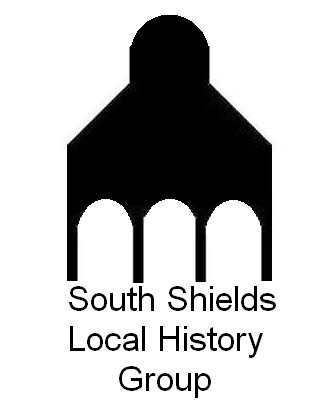A Harton Hero
Edward Henry (Harry) Richardson was born in South Shields on 5 March 1885, the son of Leonard (a mariner) and Matilda Ann Richardson (nee Freeth). At the time of the1891 census his father was at sea and the family lived at 20 Regent Street, South Shields. His mother (b. Gilesgate, Durham) was aged 39; Edward was 6, while his brother Leonard was 12 and his sister Marian Freeth was 10.
On 8th September 1900 (age 15) Edward was indentured as an apprentice for four years to the Stag Line Ltd to learn seamanship and undertake a career in the Merchant Marine service.

On 28th July 1909 he married Mary Richardson (nee Dunn) at Saint Nicholas’ Church, West Boldon. Three years later the conscientious Edward gained his certificate as Master for foreign going steamships at the comparatively young age of 27 and spent much his working life at sea.

In January 1914 Mary gave birth to their only child Margaret and come WW1 the family lived at 9 South Avenue, Harton. As an experienced ships Master he was given a Temporary Commission as a Lieutenant in the Royal Naval Reserve (R.N.R.).

Edward was awarded a rare Albert Medal in November 1916 for helping to extricate trapped and wounded seamen from a burning ammunitions ship in the Port of Archangel, despite small arms ammunitions exploding all around him.

Promoted to Lieutenant-Commander, he was appointed commanding officer of the Russian Gunboat Advokat in 1918, one of three paddle-steamers each armed with a12-pounder and ‘a pom-pom’, that formed the bulk of the Anglo-Russian Naval Brigade in North Russia, under the command of Commander P. H. Edwards. He participated in operations up river on the Dvina, including engagements at Bereznik, Troitsa, Borka and Chamovo, and took part in defensive skirmishes when Bolshevik gunboats sometimes ventured down river, but was later hit by shore batteries. However, with the advent of winter, and the arrival of ice, the flotilla was withdrawn in November 1918 and for his services Richardson was awarded the Distinguished Service Cross (DSC)

He was also awarded the Russian Order of St. Stanislas 2nd Class (with Swords) and the Order of St. Anne.

DSC Albert Medal British War Victory St. Stanislas St. Anne
(The Oak Leaf on the Victory Medal ribbon signifies his Mention in Despatches)
Edward was presented with his Albert Medal, together with his Distinguished Service Cross, by H.M. King George V at Buckingham Palace on 17 May 1919. Finally he was Mentioned In Despatches “for good services during Naval operations in North Russia”. (London Gazette 8 July 1920). He subsequently served as a transport officer 3rd grade in H.M.S. President.
At the time of the 1939 Register the Richardson family were living at 5 Warkworth Terrace, Tynemouth – Edward (a marine engineer), Mary (his wife) and their daughter Margaret Richardson, a teacher of the deaf.

Edward died in The General Hospital, Newcastle, on 8 October 1953 (Probate), aged 68; at the time residing at 5 Warkworth Terrace, Tynemouth. He left ‘effects’ valued at £3,402, 12s & 3d to his widow, Mary. Her death was registered in Tynemouth in March 1963, aged 69 and they are buried together at Preston Cemetery, North Shields.

The gravestone inscription reads “Edward Henry Richardson A.M, D.SC.” referencing his Albert Medal and Distinguished Service Cross.
Sources:
British Newspaper Archives
FindaGrave Website
Jean Stokes
Jim Mulholland
John Lightfoot
Joyce Bell
National Archives
Peter Hoy
Sue Wilkinson
Terry Ford
